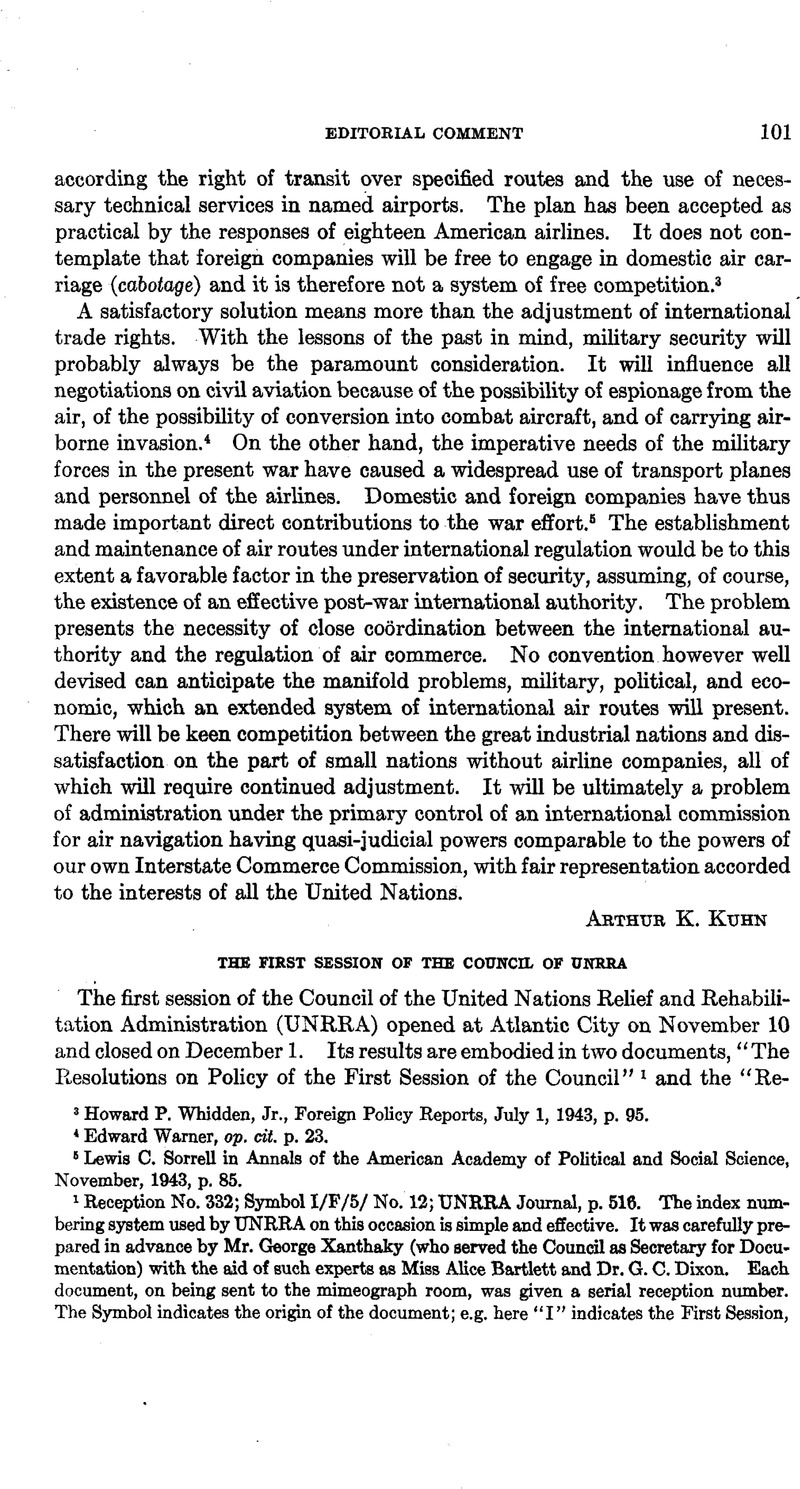Published online by Cambridge University Press: 12 April 2017

1 Reception No. 332; Symbol I/F/5/ No. 12; UNRRA Journal, p. 516. The index numbering system used by UNRRA on this occasion is simple and effective. It was carefully prepared in advance by Mr. George Xanthaky (who served the Council as Secretary for Documentation) with the aid of such experts as Miss Alice Bartlett and Dr. G. C. Dixon. Each document, on being sent to the mimeograph room, was given a serial reception number. The Symbol indicates the origin of the document; e.g. here “I” indicates the First Session, “F” indicates that the material emanated from a committee or committees of the Council; “5” is the symbol of the Committee on Ad Hoc Committees which prepared this consolidated document, and “No. 12” indicates that this is the twelfth document from that Committee.
2 Reception No. 336, UNRRA Journal, p. 597.
3 A good brief summary may be found in the Foreign Policy Bulletin, Vol. XXIII, No. 9, Dec. 17, 1943, written by Mrs. Vera Micheles Dean, who was a member of the temporary staff of Director General Lehmann, Herbert H.. See also Foreign Policy Association, Reports, Vol. XIX, No. 20 Google Scholar.
4 Text in this Journal, below, Supplement, p. 33.
5 U. S. Dept, of State Bulletin, Vol. VIII, p. 523.
6 The Chairman of the Council of UNRRA is an official only of the Session for which he is elected, being thus more similar to the President of the Assembly than to the Chairman of the Council of the League of Nations and the Council of UNRRA is in fact comparable rather to the Assembly than to the Council of the League.
7 Under Art. III, 4 the Committee on Supplies consists of the “principal suppliers of materials for relief and rehabilitation.” The following were named: Australia, Belgium, Brazil, Canada (Chairman), China, the French Committee of National Liberation, the Netherlands, New Zealand, The Soviet Union, the United Kingdom and the United States. The Committee on Financial Control is composed of China, Greece, Mexico Norway, Union of South Africa, Soviet Union, the United Kingdom and the United States (Chairman).
8 Under Art. III,5 Brazil, Canada and the United States were added to the twelve countries in the European area to form the Committee for Europe. The Committee for the Far East is composed of Australia, China, the French Committee, India, the Netherlands, New Zealand, the Philippine Commonwealth, the United Kingdom and the United States.
9 The Agreement uses the word “member” to refer both to the state or government which belongs to UNRRA, and to the individual who represents a state on the Council. The resulting confusion is likely to persist but is not serious.
10 Journal, p. 755.
11 Cf. Riches, C. A., Majority Rule in International Organization, Baltimore, 1940.
12 Cf. e.g. Arts. VIII, V and VI. The basic achievement was the insertion in Art. III, 1 of the provision that except in special cases “The Council shall vote by simple majority.”
13 UNRRA Journal, p. 634.
14 Resolution No. 14, UNRRA Journal, p. 543.
15 The remaining details of the Financial Plan are skillfully elaborated and are of general interest but can not be discussed in detail here. States whose territories have been occupied are not called upon to contribute the 1% but may make voluntary contributions.
16 UNRRA Journal, p. 576.
17 Res. No. 32, UNRRA Journal, p. 568.
18 See Reception Nos. 104, 105 and 107. The last is of special interest as a brief collection of precedents for immunities for staffs of international organizations.
19 See Reception No. 24 and Resolution No. 5, UNRRA Journal, p. 528.